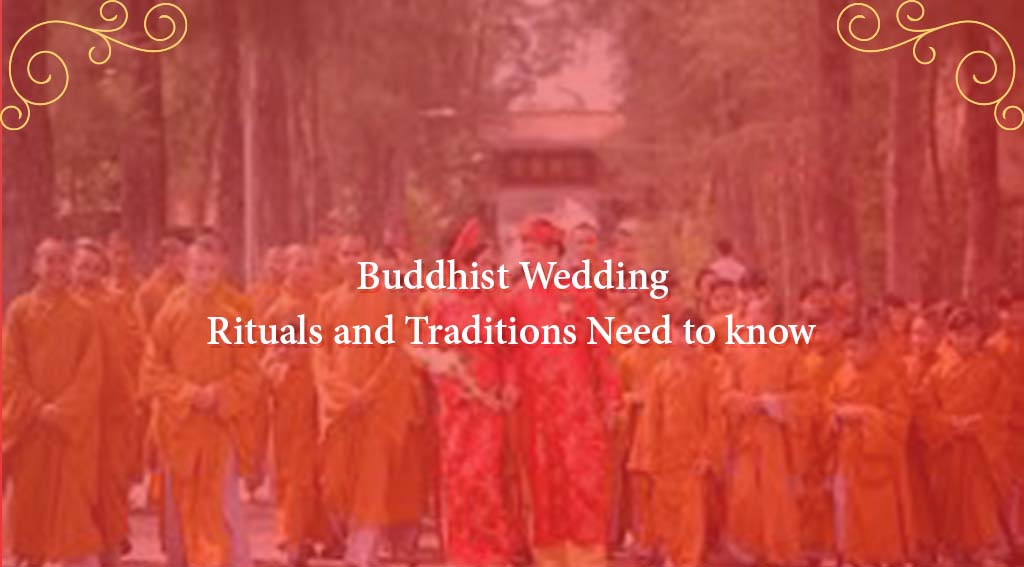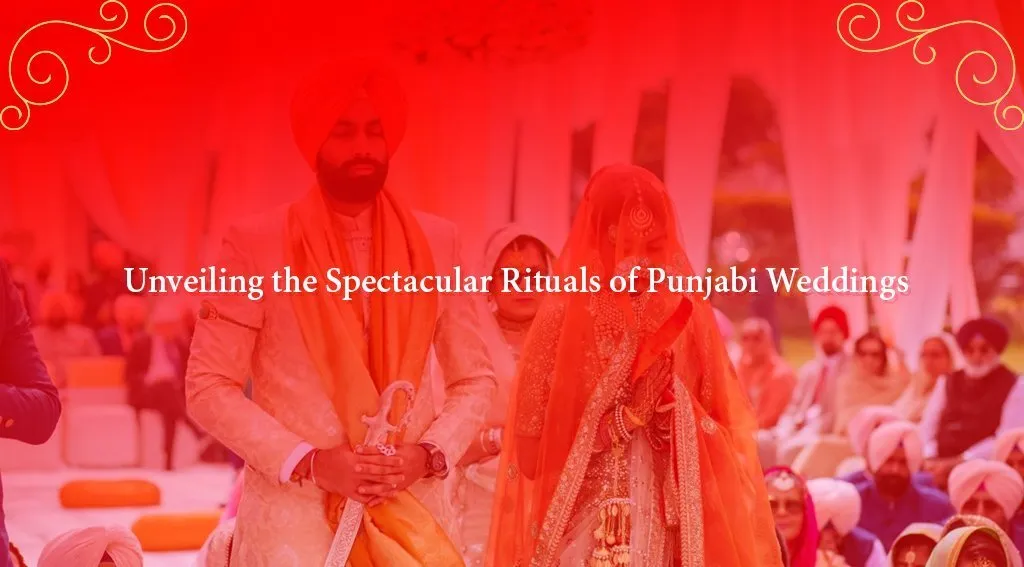A Buddhist Wedding Rituals is a celebration that beautifully merges ancient traditions with modern love stories. Rooted in the teachings of Siddhartha Gautama, these weddings serve as a profound expression of wisdom, compassion, and harmony, reflecting the couple’s dedication to these values in their partnership.
Unlike some other spiritual traditions, Buddhism considers marriage to be a secular affair—a choice made by individuals rather than a religious sacrament. This perspective allows Buddhist couples to craft weddings that resonate deeply with their cultural heritage while embracing contemporary elements.
Buddhist Wedding Rituals are most prevalent in Asia, Southeast Asia, and India. These ceremonies often incorporate a blend of contemporary customs, such as the cutting of wedding cakes and dancing to popular tunes, alongside time-honored rituals like making offerings before a Buddha statue.
This fusion of old and new is a testament to the intimate wedding celebration often found in these regions, where diverse backgrounds and traditions intersect.
In this article, we will explore the enchanting world of Buddhist weddings, revealing eleven captivating rituals and practices that enrich these celebrations with meaning and significance.
Top 11 Buddhist Wedding Rituals
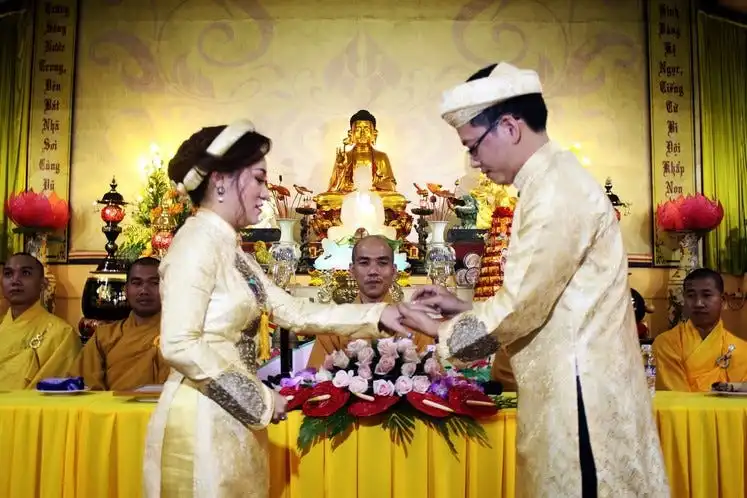
1. Decorations: Symbols of Serenity
Decorating the wedding venue is a labor of love. Symbols of Buddhism and the couple’s heritage are thoughtfully arranged, creating a serene atmosphere. The centerpiece often features a majestic golden Buddha statue encircled by offerings of incense, candles, and lotus flowers.
In Tibetan Buddhist Wedding Rituals, colorful prayer flags adorn the space, symbolizing good fortune and harmony. Meanwhile, in places like Hong Kong, red and gold décor is favored for its opulent symbolism. Regardless of the specific decorations, the ambiance always radiates peace and auspiciousness.
2. The Couple’s Outfits: Honoring Heritage

Choosing wedding attire is a deeply personal decision that reflects the couple’s cultural roots. While some may opt for classic white gowns and tuxedos, others choose traditional garments. For instance, a Chinese bride and groom might don a qun gua or chang shan, elaborately embroidered outfits steeped in history.
In Japan, a floral kimono may grace the ceremony, while a Thai bride could shine in a regal siwalai dress. The diversity extends to Nepalese weddings, where the groom dons a colorful tunic and the bride adorns herself in a resplendent red sari and gold jewelry.
3. The Event Coordinator: Orchestrating Elegance
In Buddhist weddings, there is typically no monk or nun to officiate the ceremony. Instead, a friend or civil celebrant often leads the proceedings.
Some couples, like Katherine Luk and her husband in Penang, Malaysia, enlist the expertise of a “dai cum jeh” or an older woman well-versed in ancient Chinese traditions. She not only coordinates the rituals but also ensures that everything needed, including incense sticks, is readily available.
4. Meditations and Readings: Cultivating Mindfulness
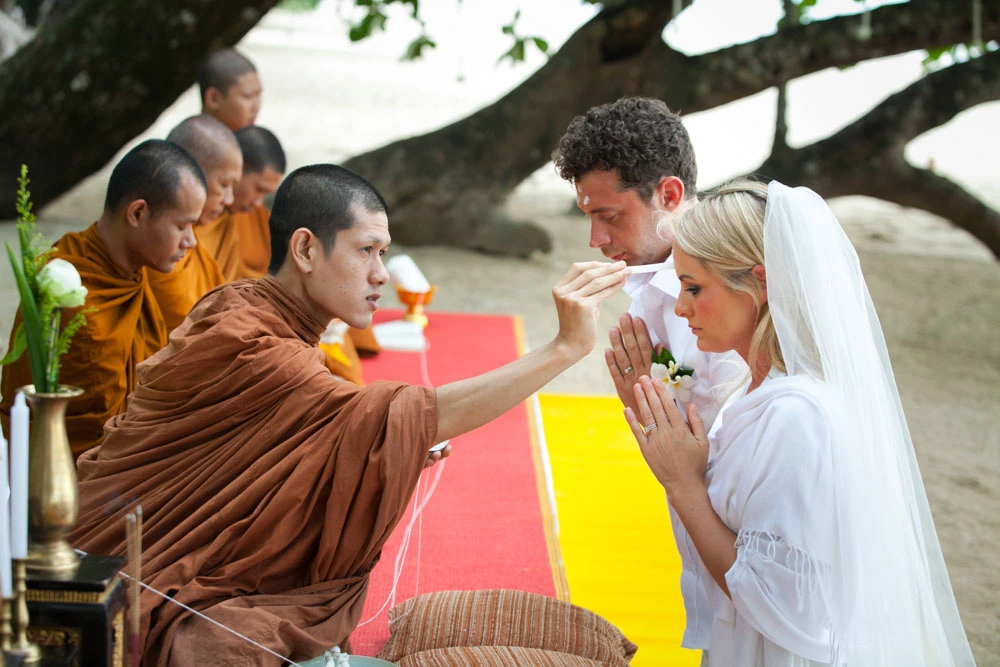
Meditation marks the beginning of a Buddhist wedding ceremony. It serves as a moment for attendees to cultivate mindfulness and loving-kindness. Afterward, passages from revered figures like the Dalai Lama or Dōgen of the Soto Zen school may be read. The Sigalovada Sutta, which contains the Buddha’s wisdom on harmonious domestic relations, is often included in these readings.
5. Vows: Commitment to Compassion
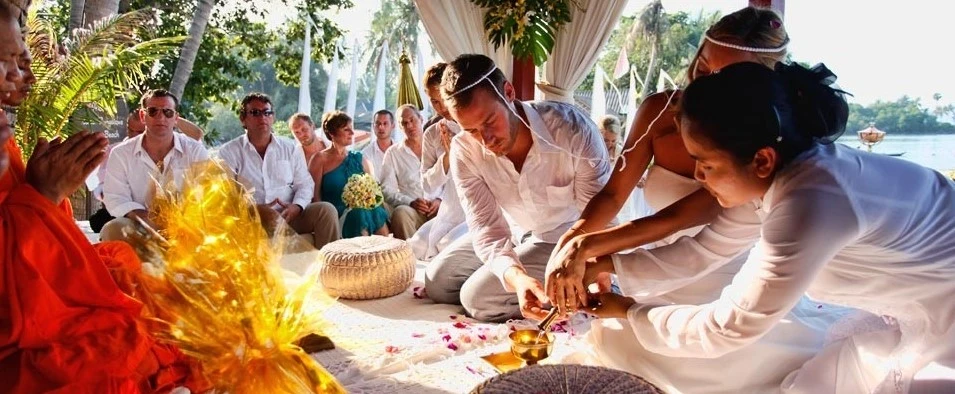
Some couples choose to recite vows during the ceremony, reflecting their dedication to patience and compassion throughout their relationship. These vows may be traditional or custom-written, symbolizing the enduring nature of their commitment in the face of life’s changes.
6. Offerings to the Buddha: Honoring Wisdom
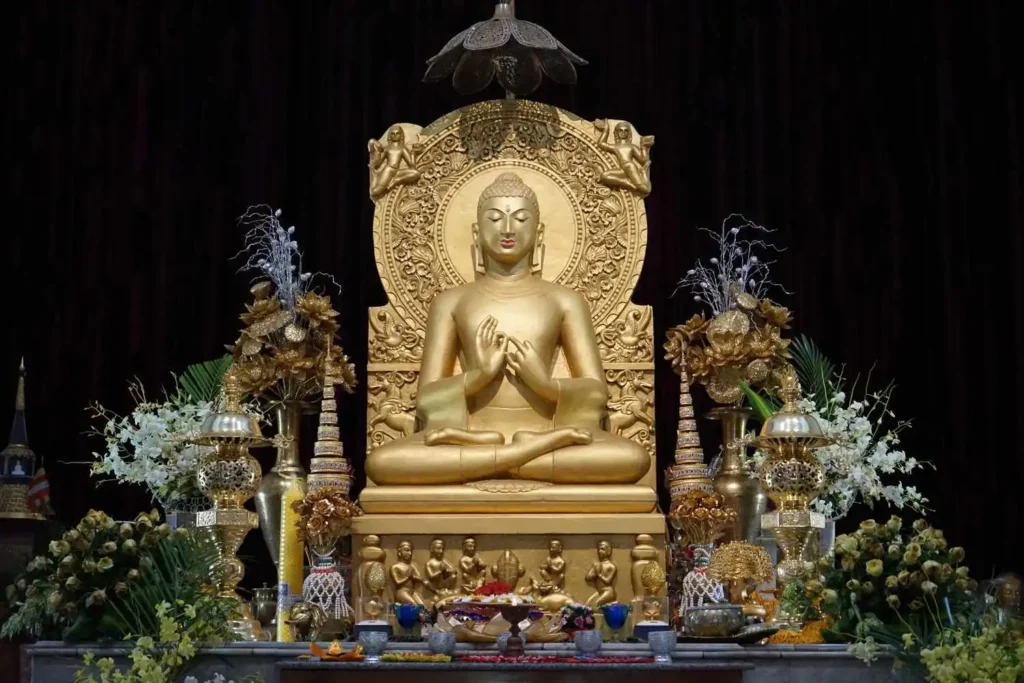
At the heart of a Buddhist wedding is the act of making offerings to the Buddha. The couple reverently places offerings at an altar or statue representing the Buddha. Candles, incense, and packages of food and flowers are common offerings. This practice is not about worshiping the Buddha but rather showing respect for his teachings and aspiring to awaken the wisdom within.
7. Blessings by Monks: Seeking Good Fortune

Incorporating Buddhist monks or nuns is a cherished tradition in these weddings. Monks are invited to offer blessings to the couple, bestowing their good wishes for a harmonious and prosperous union. The chanting of “bhikkhus” in Pali, even if not fully understood, imparts a sense of tranquility and joy.
8. Rituals of Togetherness: Symbolizing Unity
Most Buddhist ceremonies feature a ritual symbolizing the unity of the couple. Depending on the cultural context, this can involve exchanging rings, pouring water into a bowl, tying red strings, or drinking sake from three cups representing the Buddha, Dharma (teachings), and Sangha (community). These rituals beautifully signify the intertwining of two lives.
9. A Buddhist Feast: Celebrating Diversity
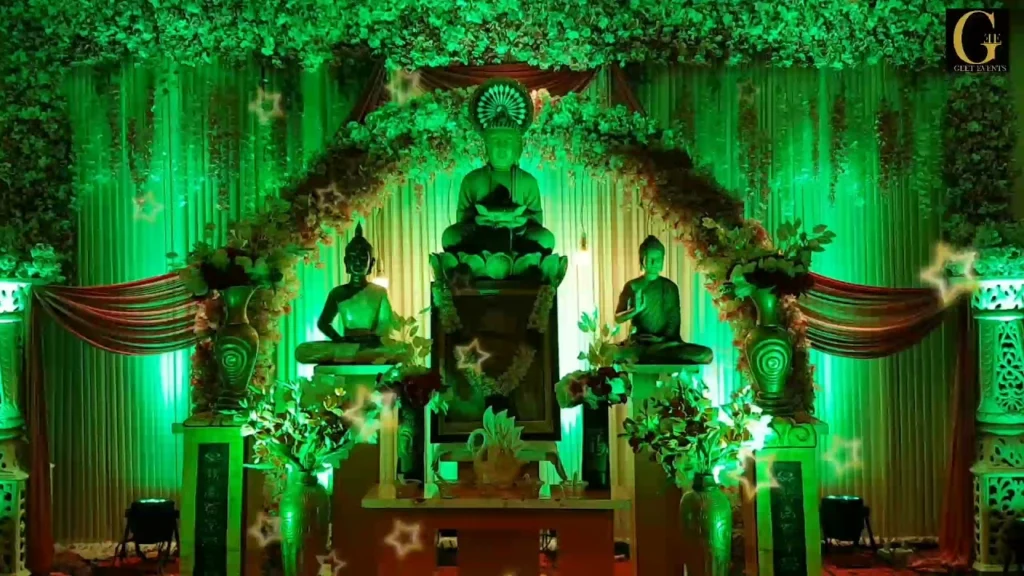
Guests gather for a sumptuous feast, typically served in a plated style or as large family-style dishes at each table. The menu often reflects the couple’s backgrounds, featuring a fusion of flavors that mirror their upbringing and surroundings.
While not all Buddhists are vegetarian, there are usually delightful options for those who refrain from meat. The celebration may or may not conclude with a wedding cake, but it always includes delectable desserts.
10. Music and Dancing: Joyous Celebration
After the solemnity of the ceremony, it’s time for music and dancing. Folk choreography, traditional instruments, lively performances, and singing fill the air as guests celebrate the newlyweds. The music selection can vary from Bollywood hits to Cantopop tunes, ensuring there’s something for everyone to groove to. Games, speeches, and karaoke often add to the festivities.
11. The Circle of Well-Wishers: A Blessing from Loved Ones
Incorporating the tradition of the circle of well-wishers, the couple invites their loved ones to encircle them during the ceremony.
As they stand within this circle, family and friends offer their blessings, symbolizing the community’s support and best wishes for the couple’s future together. It’s a touching reminder that marriage is not just the union of two individuals but also the joining of two families and their shared journey ahead.
Conclusion
In conclusion, Buddhist Wedding Rituals are a harmonious blend of ancient wisdom and contemporary love, bridging cultures and generations.
These eleven sacred rituals exemplify the depth of meaning and beauty embedded in these unconventional wedding venues, reminding us that the union of two souls can be a source of profound inspiration. As you embark on your own journey of love, consider the wisdom of these Buddhist Wedding Rituals, which teach us to honor our heritage, cultivate compassion, and celebrate life’s diverse flavors.
FAQs
What is the significance of a Buddhist wedding ceremony in India?
Buddhist wedding ceremonies in India hold immense spiritual significance. They symbolize the couple’s commitment to living a harmonious life based on Buddhist principles of compassion, mindfulness, and spiritual growth.
Are there any specific dress codes for Buddhist weddings in India?
While there are no strict dress codes, it is customary for the bride and groom to wear traditional attire. The bride typically wears a saree or a lehenga in vibrant colors, while the groom adorns a sherwani or a traditional Buddhist robe.
Can non-Buddhists participate in a Buddhist wedding ceremony?
Yes, non-Buddhists can certainly participate in a Buddhist wedding ceremony. Buddhist weddings are inclusive, and the couple welcomes the presence and blessings of friends and family from all faiths.

